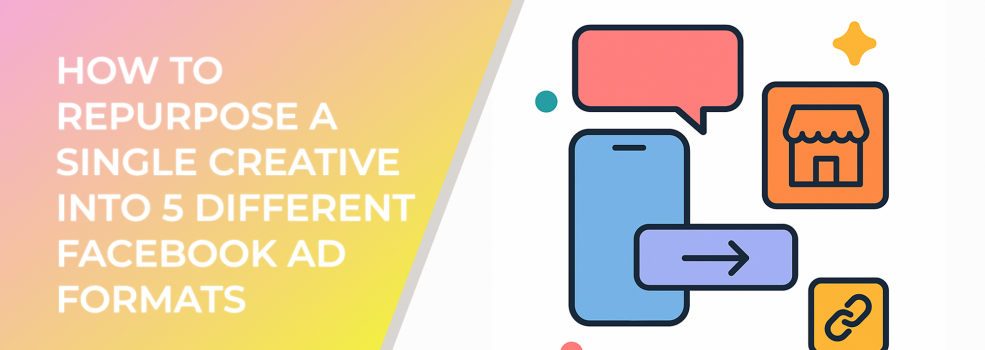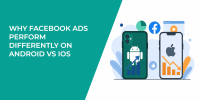Creating high-performing Facebook ads is both an art and a science. But designing new creatives for every campaign can drain your budget and time. A smarter approach is to repurpose a single creative across multiple Facebook ad formats. Not only does this increase efficiency, but it also allows you to maintain consistency in messaging while testing different formats for better performance.
Annotated breakdown of a Facebook single-image ad, showcasing the essential creative and copy elements
In this guide, you'll learn how to stretch one creative into five distinct Facebook ad types, boosting your campaign efficiency without sacrificing impact.
1. Single Image Ad
The simplest and most widely used ad format on Facebook. Use your main creative image and pair it with a compelling headline and strong call to action. This format is ideal for brand awareness and direct response.
-
Why use it: Fast to deploy and A/B test.
-
Best practices: Ensure your image is 1200x628 pixels for optimal delivery. Include minimal text on the image to avoid delivery restrictions.
Facebook’s massive reach and average time-on-platform statistics highlight the impact of creative ad reuse
Pro Tip: According to Meta, ads with images that contain less than 20% text perform significantly better in terms of reach and engagement.
2. Carousel Ad
Use the core creative image and crop or zoom it into multiple parts, highlighting different features or benefits. Alternatively, pair the original creative with complementary images.
-
Why use it: Lets users interact by swiping through cards.
-
Best practices: Use 1080x1080 pixel square images. Maintain visual consistency across all cards.
Keyword Boost: Carousel ads are great for Facebook campaign optimization and provide actionable insights for audience segmentation.
3. Video Ad
Animate your static creative into a short-form video (6-15 seconds). Even subtle motion, like text sliding in or a logo reveal, can dramatically improve engagement.
-
Why use it: Video content accounts for 50% of all time spent on Facebook.
-
Best practices: Add captions, keep it under 15 seconds, and include branding in the first 3 seconds.
Pro Tip: According to Meta, video ads generate 5x higher engagement compared to static images.
4. Slideshow Ad
This is a lightweight alternative to video ads. Use a sequence of 3-10 images (including your original creative) to build a narrative or emphasize multiple value points.
-
Why use it: Loads faster on slower connections.
-
Best practices: Use high-quality JPG or PNG images and include background music or narration for added impact.
Keyword Boost: Excellent for Facebook ad testing and understanding user behavior through creative performance analysis.
5. Collection Ad
Place your original creative as the cover image or video in a Collection Ad. Then pair it with product images pulled from your catalog.
-
Why use it: Great for mobile shopping and showcasing multiple products in a seamless experience.
-
Best practices: Feature the creative prominently and make sure product catalog images are cohesive.
Data Insight: Facebook reports that Collection Ads increase conversions by up to 30% when used with Instant Experience.
Final Thoughts
Repurposing one high-quality creative across multiple ad formats isn't just efficient—it's smart marketing. It allows you to perform structured A/B testing, optimize ad delivery, and reduce creative fatigue. With careful formatting and audience targeting, you can turn a single image into a campaign powerhouse.

